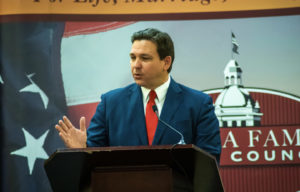Op-Ed: Enrollment declines increase pressure on ‘woke’ higher ed
(The Center Square) – Higher education is confronting a problem: its customer base is shrinking. High birth rates in the 1990s and early 2000s created large incoming classes. After reaching a peak…

(The Center Square) – Higher education is confronting a problem: its customer base is shrinking. High birth rates in the 1990s and early 2000s created large incoming classes. After reaching a peak in 2007, birth rates have steadily dropped. Births rose to 4.3 million in 2007, while this past year saw 3.7 million.
Children born during the dropoff will soon be eligible for enrollment. Nathan Grawe, an economist who maintains a forecast known as the Higher Education Demand Index, projects enrollment declines in some states of over 15 percent.
Elite institutions might weather the crisis due to large endowments and relatively inelastic demand for their offerings, but regional colleges will encounter increasing hardship. The median endowment for private colleges is $37.1 million, much of which is restricted from supporting annual budgets. Smaller incoming classes will make an immediate financial impact as colleges struggle to fill dorms, classes, and dining facilities.
Yet, instead of rising to the challenge, schools are implementing woke offerings that increase the risk of institutional failure.
Hiring diversity, equity, and inclusion (DEI) bureaucrats adds unnecessary financial strain, and woke policies often bring reputational harm and financial risk from lawsuits. While DEI is a loosely-defined concept, in practice, DEI initiatives manifest on college campuses as neo-Marxist and progressive programming, admissions, and hiring practices.
Lower enrollment and tuition dollars will force university leaders to make tough decisions on what they value the most. Will they roll back DEI offerings, or will funding toward research and education see the effects?
Today, most colleges maintain some form of a DEI office, each varying in size. The University of Michigan, for example, employs 163 dedicated DEI personnel, larger than some academic departments.
Administrative growth on college campuses is not new, but the rapid expansion in DEI initiatives is a more recent trend. Such growth shifts resources away from education towards programming and eats away at the time available for research, teaching, and learning.
Excessive bureaucratization buries professors and students with needless programs, chipping away time for research and classes. Million-dollar budgets funding administrative DEI salaries and politicized student programs do not bode well for a future where colleges operate on tighter budgets.
In addition to budgetary strains, woke bureaucrats, often thinking of themselves as revolutionaries, risk putting their employers in costly legal crosshairs.
The Gibson bakery case at Oberlin College is instructive. Following a shoplifting incident where students attacked a local bakery store owner, student activists, supported by the dean of students and then-college president, boycotted, protested, and smeared the bakery’s reputation. The Gibson family sued Oberlin and won a $36.59 million payout from the college.
Oberlin’s billion-dollar endowment ensures the decision isn’t fatal, but a similar outcome would decimate a less financially-secure institution.
Woke programming run amok also carries reputational risks. Colleges frequently require diversity statements and classes; some even consider faculty contributions to DEI when making promotion decisions. Though they might sound innocuous, many woke diversity programs train students to harass faculty whose views fall outside the progressive orthodoxy.
Colleges suffer reputational harm from a bewildered public when students and administrators act on woke theories. At Hamline University, student activists pressured the school into firing an adjunct art history professor for showing a famous painting of the Prophet Muhammad. Following a national outcry, the University is holding fast, still kowtowing to activist demands.
In addition to threatening faculty, woke programming has led to colleges banning words most deem harmless, such as “field” and “American,” furthering the image that colleges are not serious places for sound learning.
Notably, DEI programs lack evidence that they achieve their stated goals. In a recent study, Jay P. Greene and James D. Paul compare the relationship between DEI staffing and campus climate surveys (a measure of how students perceive campus inclusivity). They find campus climates are no better and often worse for minority students at universities with significant DEI staffing.
If woke programs stay or grow at the expense of standard educational offerings, university leaders send a powerful signal. The following two decades will reveal what higher education values: woke administrators and their associated risks or serious learning and education.



